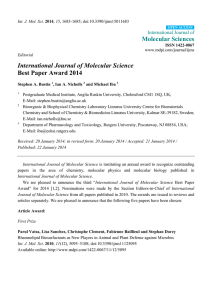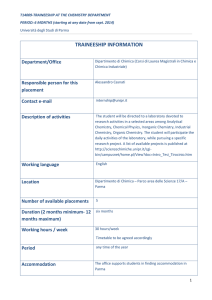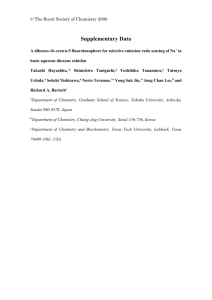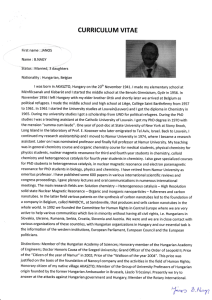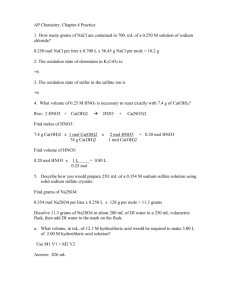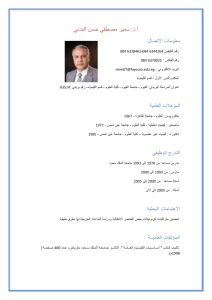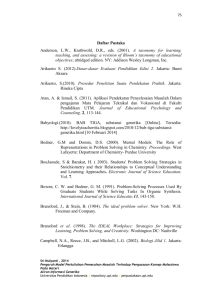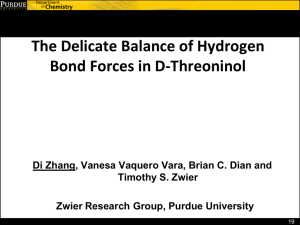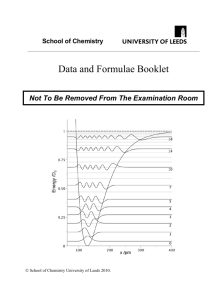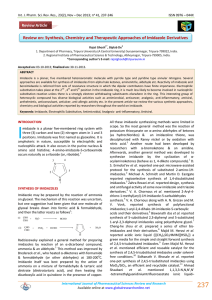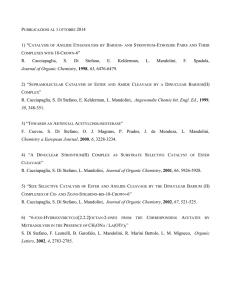Conformational Features of 4-(N)-Squalenoyl
advertisement
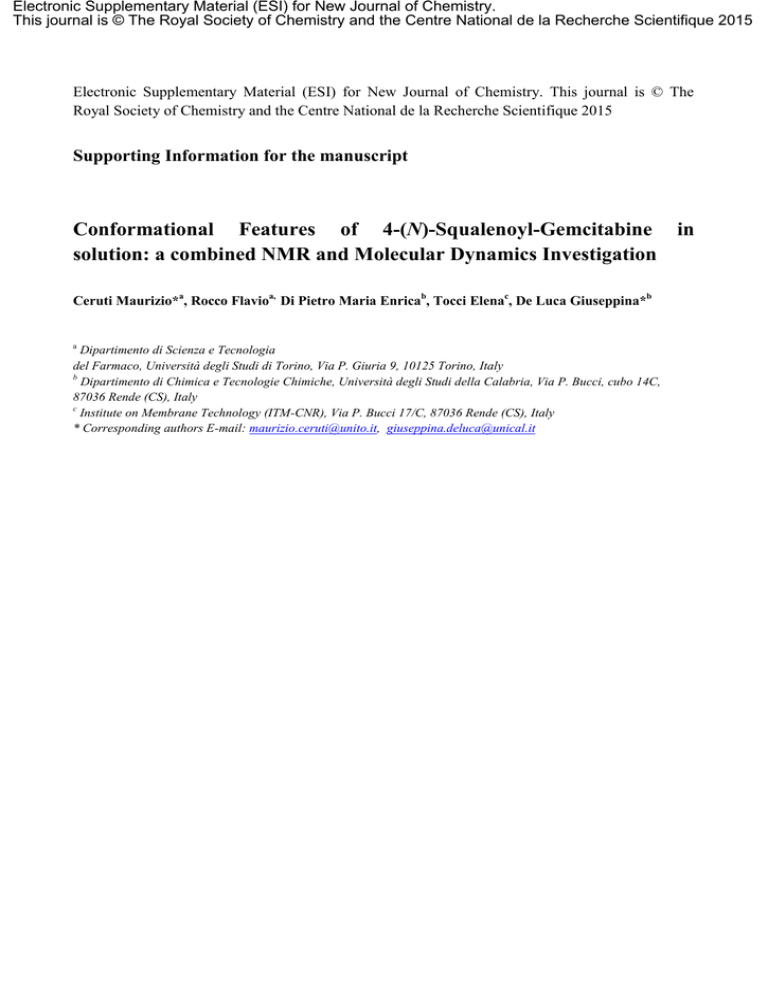
Electronic Supplementary Material (ESI) for New Journal of Chemistry. This journal is © The Royal Society of Chemistry and the Centre National de la Recherche Scientifique 2015 Electronic Supplementary Material (ESI) for New Journal of Chemistry. This journal is © The Royal Society of Chemistry and the Centre National de la Recherche Scientifique 2015 Supporting Information for the manuscript Conformational Features of 4-(N)-Squalenoyl-Gemcitabine in solution: a combined NMR and Molecular Dynamics Investigation Ceruti Maurizio*a, Rocco Flavioa, Di Pietro Maria Enricab, Tocci Elenac, De Luca Giuseppina*b a Dipartimento di Scienza e Tecnologia del Farmaco, Università degli Studi di Torino, Via P. Giuria 9, 10125 Torino, Italy b Dipartimento di Chimica e Tecnologie Chimiche, Università degli Studi della Calabria, Via P. Bucci, cubo 14C, 87036 Rende (CS), Italy c Institute on Membrane Technology (ITM-CNR), Via P. Bucci 17/C, 87036 Rende (CS), Italy * Corresponding authors E-mail: maurizio.ceruti@unito.it, giuseppina.deluca@unical.it Table I. List of the 51 conformers obtained from the MD calculations, together with their relative energy (calculated as the difference in energy between the i-th conformer and the dominant conformer at 3.8 ns) and the corresponding relative existence probability. The threshold value of about 8 kJ/mol is indicated by a horizontal dividing line. Among the 27 conformers with energy lower than the threshold value, the 4 major conformations chosen for the discussion are in bold type. snapshot (ns) relative energy (kcal/mol) relative energy (kJ/mol) relative probability (%) 3,8 0,0000 0,0000 20,2983 5,4 0,5686 2,3792 7,8201 1,3 0,6205 2,5963 7,1683 2,1 0,6410 2,6818 6,9268 4,9 0,7897 3,3041 5,3972 5,7 0,8140 3,4058 5,1816 3,6 1,0800 4,5188 3,3166 1,5 1,1314 4,7339 3,0426 4,1 1,1467 4,7978 2,9656 3,0 1,1596 4,8518 2,9020 1,6 1,1602 4,8541 2,8993 2,2 1,3035 5,4539 2,2797 4,2 1,3557 5,6724 2,0885 2,5 1,3920 5,8242 1,9651 2,3 1,3933 5,8297 1,9608 5,0 1,5068 6,3045 1,6210 1,0 1,5679 6,5600 1,4631 5,8 1,6324 6,8301 1,3130 4,6 1,6404 6,8633 1,2956 3,5 1,6525 6,9139 1,2696 1,8 1,7119 7,1627 1,1491 5,5 1,7433 7,2942 1,0901 3,3 1,7460 7,3054 1,0852 2,7 1,7636 7,3788 1,0537 2,9 1,7782 7,4400 1,0282 5,3 1,8170 7,6024 0,9634 2,8 1,8953 7,9301 0,8448 2,6 2,0130 8,4225 0,6934 3,9 2,0238 8,4675 0,6810 4,7 2,0339 8,5098 0,6696 3,1 2,0780 8,6943 0,6218 3,2 2,0780 8,6943 0,6218 2,0 2,1377 8,9440 0,5626 2,4 2,1383 8,9466 0,5620 5,2 2,1531 9,0087 0,5482 1,9 2,2359 9,3550 0,4771 3,7 2,2490 9,4099 0,4667 4,0 2,2704 9,4994 0,4503 3,4 2,3136 9,6802 0,4188 1,7 2,3196 9,7052 0,4146 5,9 2,3286 9,7428 0,4084 5,1 2,4518 10,2585 0,3321 5,6 2,4654 10,3153 0,3247 4,5 2,4777 10,3667 0,3181 4,8 2,4899 10,4178 0,3116 6,0 2,7171 11,3685 0,2128 1,1 2,7551 11,5272 0,1997 1,4 3,0005 12,5541 0,1323 4,3 3,1042 12,9878 0,1112 1,2 3,5024 14,6540 0,0570 4,4 4,3160 18,0581 0,0146 Figure I. Relative energy of the 51 conformers obtained from MD simulations calculated as the difference in energy between the i-th conformer and the dominant conformer at 3.8 ns. The red horizontal line indicates the value of the threshold of about 8 kJ/mol above which the conformers have been neglected.
